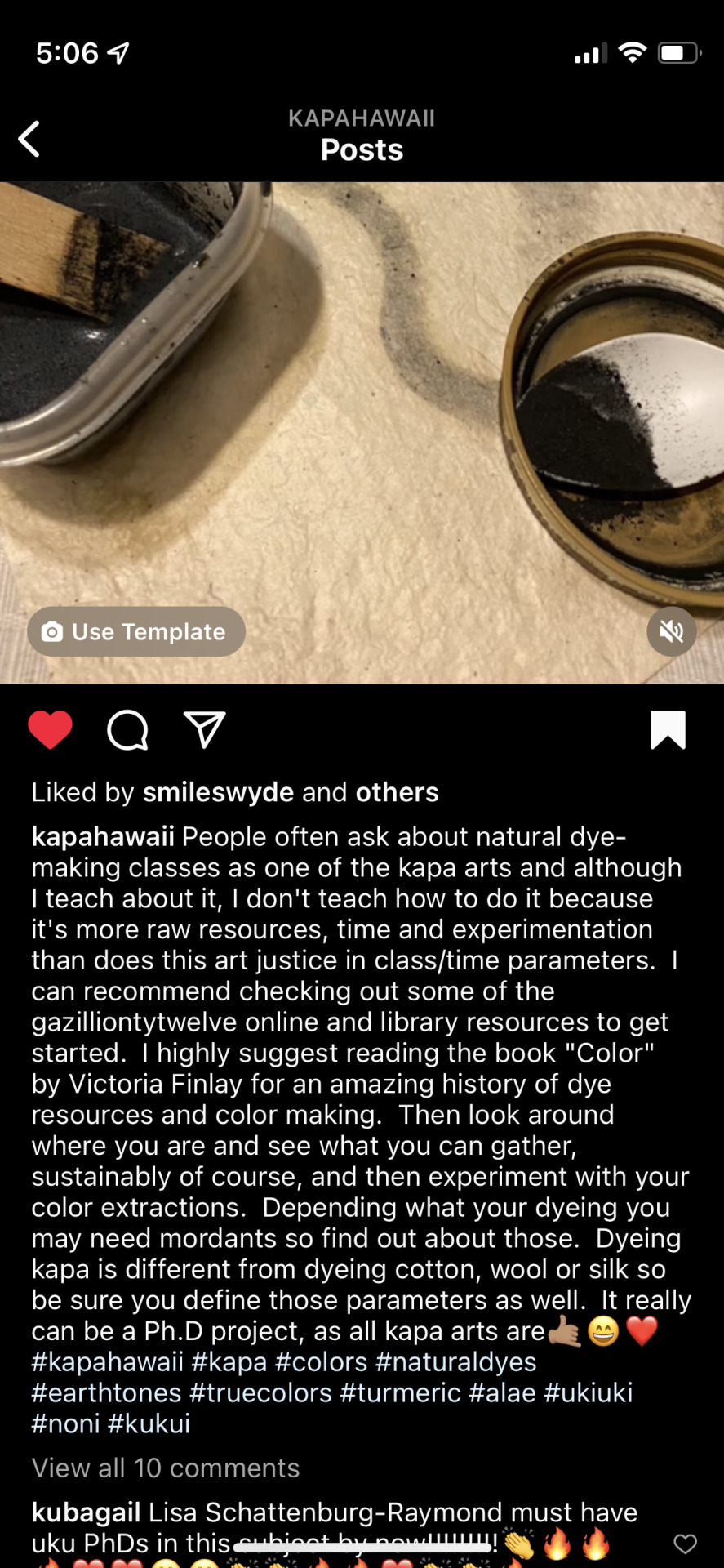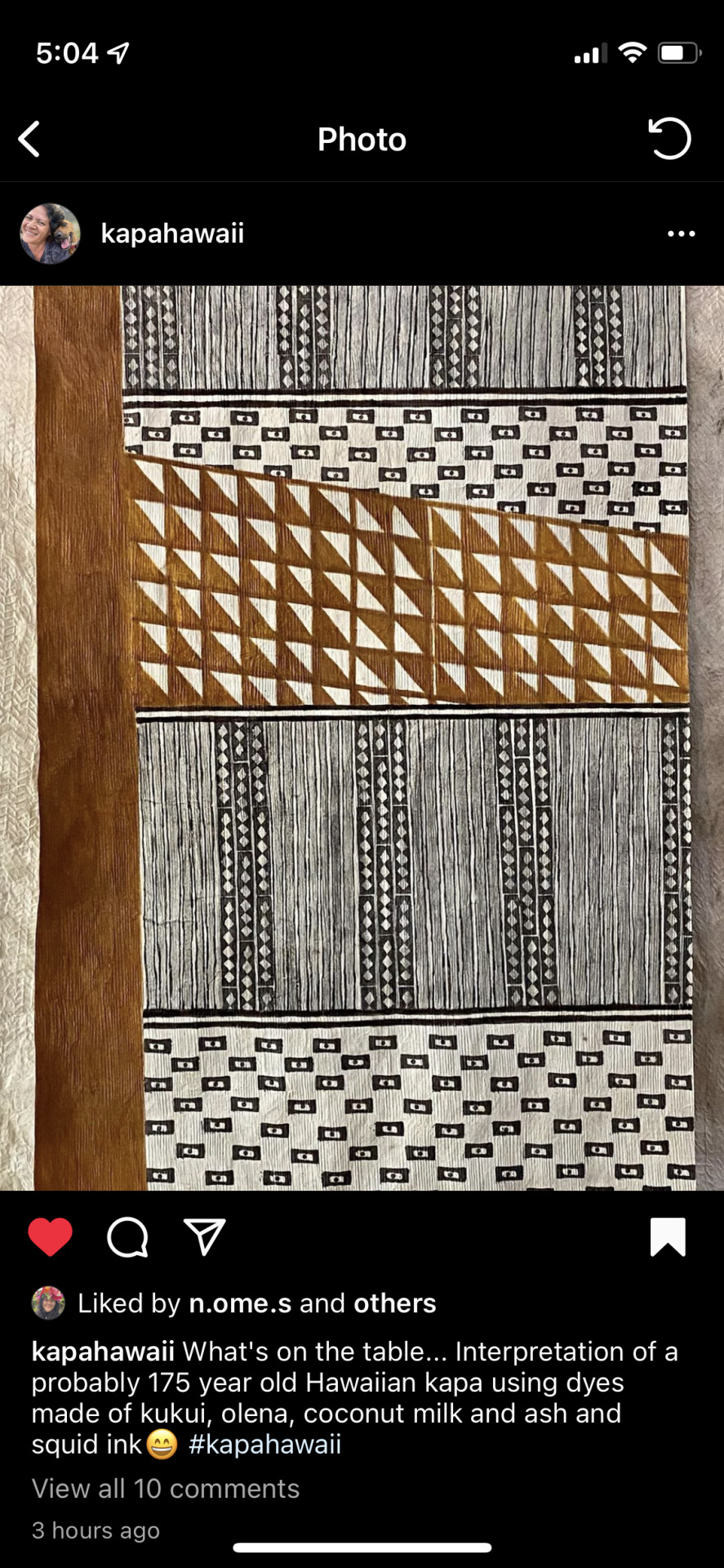Don't wanna be here? Send us removal request.
Text
Museums and Indigenous Peoples: Through the Display Glass
https://www.culturalsurvival.org/publications/cultural-survival-quarterly/museums-and-indigenous-peoples-through-display-glass
0 notes
Photo

http://www.pasefikaproud.co.nz/about/shared-pacific-values/
Shared Pacific values underpin Pasefika Proud Our vision and approach are underpinned by the following shared Pacific values, which help to nurture and sustain family and community wellbeing. They are protective factors for Pacific peoples:
LOVE | FAMILY | COLLECTIVE | RESPECT | SPIRITUALITY | RECIPROCITY.
0 notes
Text
KNOW YOUR MATS
https://www.youtube.com/watch?v=GoPWy1sWMxU
My transcript:
(Narrator) : There are many different ways of marking important occasions in the pacific; the Tongans present their crops and Ngatu, the Fijians with their tempua and Kava; and Samoa is the motherland of Mats.
There are lots of different types; to sleep on; to sit on; for important guests to sit on; but the queen of all the mat kingdom- is the ‘ie Samoa. (*The fine mat)
Formerly known as ie toga, ie Samoa is one of our most valued forms of currency.
These treasured mats are created for special people and occasions and carry with them values of Fa’a Samoa and the history of families and communities behind them.,
(Woman speaking) : Fine mat is the top mat of all the mats. And because it is the main mats that the woman weave for our culture obligations.
(Narrator) : The knowledge of how to make these national treasures was only recently revived within the last 15 years [approx. 30 years since publishing this video] But a women in a business group who set up workshops for women to relearn the ancient art and weave the finest of ie Sina again. Replacing the bigger weaves of the bigger mats that have been popularised.
(Woman speaking) *reffering to the larger mats* “those are the fake ones. Those are not really fine mats. It really makes us sad to see that our culture is moving away... they think big things are good things. They do not see the value in it. There are more andf more young girls wanting to learn... we encourage them this is the future of our weaving programme and our fine mat project.
(Narrator) : Making an ie as a labour of love and of patience. It takes a skilled weaver months to achieve. ... (With Woman) - begin to describe the making process...
0 notes
Text
community
https://www.instagram.com/period7even/?hl=en
https://www.instagram.com/southsides/?hl=en
0 notes
Text
Have you heard of the term Pasifika Edgwalker? In response to the "plastic" term.
Pacific/Moana scholar Anne Tupuola uses the term Pasifika edgewalkers as she tries to make some sense of the way second and third generation youth of Pacific descent living in Aoteraoa/New Zealand achieve identity status, or if they realise a status at all (2004:87). She situates diaspora in referring to “a mix or fusion of cultures which expressed new ethnic identities which cut across… class, region, age, gender and sexuality” (2004:87).
The term ‘edgewalkers’ is borrowed from Nina Krebs, a psychologist who wrote a book titled with the same name. Tupuola defines edgewalker with reference to Krebs where she describes it as youths with multiple ethnic or cultural worlds. Krebs states edgewalkers are resilient to cultural shifts and embrace their cultural complexity while engaging in the general public (Tupuola 2004:90; paraphrasing Krebs 1999:9).
This paper explores the complexities of what youth encounter in Aotearoa today in yerms of how they identify with their cultures. What drew me to this paper was actually the term ‘edgewalker’. I find it not as negative as ‘plastic’ but still has the same meaning (as far as giving a term that is, which there should not be!).
It looks at similar things that we have found throughout our project that a lot of the porblems stem from Maori and Pasifika being brought up in a westernised Aotearoa.
Of interest was the findings that because of this lack of idenity, some youths turn to risk taking activities such as joining gangs to give them a sense of belonging. They can also turn to activities such as hip hop to give a sense of culture instead of turning to their own cultures.
With all this in mind, it shows that there are definate identity issues with young Maori and Pasifika which needs to be addressed before we lose even more of our ‘culture’ and ‘identities’.
https://doi.org/10.1080/07256860410001687045
0 notes
Photo


I approached year 3 communication design student Jordan Tane about her Best Awards gold award project “What makes me Plastic?” and she was kind enough to send me her research blog. It is extensive to say the least.... this is a feedback blog post from one of her class presentations and It is so applicable to my research that I will consider using lots of these ideas in my own contextual writings...
0 notes
Text
TAPA - google definitions
Tapa, a general term used to describe Polynesian bark cloth, is made from the inner bark of the Broussonetia tree that has been hand beaten, scraped, pressed, and patterned to create printed cloth. In Samoa, two methods are used to produce large pieces of printed bark cloth. - Posted by Kyla I. Katigbak on December 30, 2015 https://www.cooperhewitt.org/2015/12/30/samoan-tapa/
Siapo is the Samoan word for a fine cloth made from the bark of the Paper Mulberry tree. In Fiji, this linen-like barkcloth is called Masi, in Tonga it's Ngatu. Wherever it's made in the Pacific, siapo is regarded as one of the region's finest and most distinctive art forms.
A modern yet traditional take on the Elei, which are the block printing designs in Samoa. Elei is a traditional art of the islands considered one of the most prized possessions often seen in screen printing, fabric and art, this was the inspiration behind this piece. - https://www.whisperliving.com/products/lei
0 notes
Photo


Proud Samoans marching the streets in South Auckland after the National League team, TOA Samoa won a match in the world cup.
Literally translated, Toa means a brave warrior. So, Toa Samoa is a brave Samoan warrior. But the inspiration and meaning runs deeper. When the name was adopted for the national rugby league team, TOA represents Tautua (Service), Ola (Life) and Alofa (Love).
0 notes
Photo

Speaks on Community and importance of keeping connected through values and storytelling - Cultral Identity
0 notes
Photo

Alisha Prasad’s YAAD KARO presentation was a very cool display of her year 3 research that I had the honour of looking through. I especially loved how she journeyd in the book from black and white to colour - symbolisng the progression of her own history and learnings from her family and friends back in Fiji over the project timeline. The landscape book reflected the connection to land (value) so beautifully and green and gold foiling gave the most beautiful nod to the importance of her subject. A great inspiration to stay motivated.
0 notes
Photo



Reviving Aute: Nikau brings back the forgotten Maori Tapa artform to the public eye after centuries of lost crafting
0 notes
Photo




Joseph Churchward - Samoan Typographer
For my poster, I wanted to acknowledge the Samoan creatives so who else to use for type design than the great and late-type designer, Joseph Churchward.
Header text:
‘Prophet’ - Downloaded from www.abcdinamo.com
Churchward Design 70 - This is the one I can feel it
For the body text, I will use the 2002 Churchward font for it’s simple and legible characters will translate nicely within the abstract of my poster being easy to read with lots of text.
also due to it being free and easily accessible within my time restraints. Downloaded from https://befonts.com/churchward-font-family.html
0 notes
Photo









SHAUN NAUFAHU (Tongan / Palagi)
Veipā 'o e 'Āati (Dissonance of Art) is an exploration of the current dynamic that exists between customary and contemporary Pacific art. Navigating cultural standpoints that often contradict one another, it becomes hard to discern the role of cultural practices once they're removed from their initial context. Has customary art become purely a form of revalidating cultural identity, or do it and its practitioners continue to find new meaning? Is the same held for the contemporary space or are artists inappropriately breaking protocol? Through a series of visual responses and interviews with active practitioners, this publication is a personal attempt to understand the wider context and nuances affecting a complex relationship.
I found Naufahu’s work very interesting and so closely related to my work and research topic.
After searching his instagram, I even noticed that his work is published and on showcase at my local Manurewa Library! How’s that for inspiration!
0 notes
Text
Tutor Feedback (Presentation)
Key points extracted from Audio File sent to me from Tutor David Coventon post presentation.
“The way you frame the ‘Keeping the marks and crafts taught from our ancestors in a digital world’ is very strong.
It is interesting the idea of teaching or passing on / passing down / handing down from generation to generation ... from a Samoan perspective.
Keep it to a particular audience (Samoan) and focus on that rather than a general Pacific population... Cultural alignment of other experiences can be signalled and run alongside that.
Love this idea... We take for granted in the digital world... what will the digital marks and crafts that are handed on maybe? A speculation? What will I, as a person in the analogue and in the digital realm - who is to say that in the future the traditions and the things that get handed down may become digital. (That could be really huge!) It doesn't mean that there's no space for the tactile/handmade and textile...
Research recent grad Shaun Naufahu at ALT Group.(Final year exhibition - very interesting)
His project is very interesting - Speaker at Beyond Talks for 3rd year in semester 1. Ask David for the recording.
Storytelling is huge - but maybe swap out that word for “values” instead. Values are often given through storytelling. - Values might come through a Tapa.
Think about the objects of significance, what are the objects of value that are shared through generations... What are the values that I try to share with the children that I look after? (some key things in there)
Make it a bit bigger - Go Values!!!
Steer away from children's stories - you are not an author hahaha and AUT cannot access you as an author.
0 notes
Photo




Peer reflections & Feedback
My peers were kind to give me positive feedback; however, due to my lack of development, it was simply just that. (Not too much constructive criticism).
0 notes



